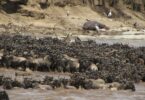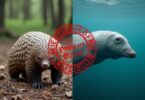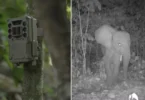In the heart of Africa’s savannas and grasslands roams one of the most fascinating and social creatures: the African wild dog (Lycaon pictus). Known for their striking coat patterns and unparalleled hunting skills, these dogs are not just predators; they are a symbol of the intricate balance of nature. Despite their vibrant spirit and close-knit packs, African wild dogs face numerous challenges, making them one of the continent’s most endangered species. Let’s dive into the captivating world of these incredible animals.
A Social Structure Like No Other
African wild dogs are renowned for their unique social structure. Living in packs that can range from 2 to 27 members, these canines demonstrate a level of cooperation rarely seen in the animal kingdom. Each pack member plays a vital role, from hunting to raising the young.
Their loyalty to one another is evident during hunts, where they employ strategic teamwork to chase down prey like impalas and gazelles. This social dynamic not only enhances their hunting success but also strengthens their bonds, showcasing their intelligence and emotional depth.
The Art of Hunting
What sets African wild dogs apart from other predators is their remarkable hunting strategy. They rely on endurance and teamwork rather than stealth. A typical hunt can cover several kilometers, as the pack takes turns leading the chase, which can last over an hour.
This hunting technique not only increases their success rate but also minimizes energy expenditure, allowing them to sustain their pack’s needs. They are incredibly efficient, boasting a success rate of 80% compared to the 30% of their competitors like lions.
A Colorful Coat and Communication
One of the most striking features of the African wild dog is its coat, adorned with patches of black, brown, yellow, and white. This unique pattern not only serves as camouflage in their natural habitat but also allows pack members to recognize each other.
Communication among wild dogs is essential for maintaining their social structure. They use a variety of vocalizations, including twittering sounds and high-pitched squeaks, along with body language, to coordinate activities and express emotions.
Facing Extinction
Despite their adaptability and social prowess, African wild dogs are classified as endangered. Habitat loss, human-wildlife conflict, and disease outbreaks have drastically reduced their populations. In the 1970s, there were approximately 500,000 wild dogs in Africa; today, fewer than 6,000 remain.
Conservation efforts are critical to protecting these extraordinary animals. Organizations like the African Wildlife Foundation work tirelessly to safeguard their habitats and promote coexistence with local communities. Community-based programs educate residents on the importance of preserving these animals, which play a vital role in maintaining the ecosystem’s health.
The Hope for the Future
Awareness and conservation initiatives are paving the way for a brighter future for African wild dogs. Efforts like wildlife corridors, protected reserves, and community engagement are crucial to ensuring these majestic creatures thrive once more.
By understanding the plight of African wild dogs and the vital role they play in their ecosystems, we can foster a deeper appreciation for wildlife conservation. Every small action—be it supporting conservation organizations, advocating for habitat protection, or simply sharing knowledge—can make a significant difference.
The story of the African wild dog is a testament to resilience, cooperation, and the beauty of the natural world. As we continue to learn about and protect these incredible creatures, we not only preserve their legacy but also ensure that future generations can witness their remarkable lives.








